The fight for equal rights in the LGBTQ+ community is an ongoing battle that affects millions of individuals worldwide. As our society evolves, it’s crucial to acknowledge and address the unique challenges faced by those who identify as lesbian, gay, bisexual, transgender, queer or questioning (LGBTQ+) and actively work towards a more inclusive world.
This blog will explore historical and current discrimination issues faced by this community while highlighting the vital advocacy efforts made to ensure their human rights are protected.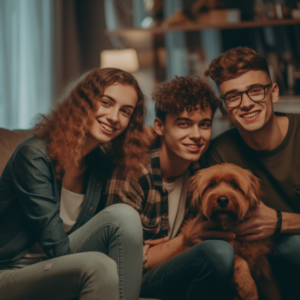
Key Takeaways
- The fight for equal rights in the LGBTQ+ community is ongoing and encompasses various areas such as employment, housing, healthcare, and transgender rights.
- Discrimination against minority groups often intersects with discrimination based on sexual orientation or gender identity creating unique challenges for individuals who belong to both communities, highlighting the importance of intersectionality within the LGBTQ+ community.
- Legal advocacy and court cases have been instrumental in securing LGBTQ+ rights; however, education and awareness initiatives along with community organizing and activism play a crucial role in promoting understanding, acceptance, empathy towards the LGBTQ+ population.

Understanding LGBTQ+ Rights And Discrimination
LGBTQ+ rights have come a long way, but discrimination is still prevalent in many areas, including employment, housing, healthcare and transgender rights.
Historical Context And Current State Of LGBTQ+ Rights
The struggle for LGBTQ+ rights has been a long and arduous journey, with roots going back decades. While the modern gay rights movement is commonly traced to the 1969 Stonewall Riots in New York City, efforts to decriminalize homosexuality and fight against discriminatory laws began even earlier.
The American Psychiatric Association’s decision to declassify homosexuality as a mental illness in 1973 was another significant milestone in changing public perception of the LGBTQ+ community.
Though progress has undoubtedly been made over time, there are still numerous hurdles faced by those who identify as part of the LGBTQ+ community. In some regions, they continue to experience relentless systemic oppression and violence due to their identities.
 On a more positive note, victories such as marriage equality becoming widespread across Western countries since 2015 demonstrate how far we have come; however, these achievements do not mark an end point but rather serve as motivation for ongoing advocacy work towards ensuring equal rights worldwide for all individuals regardless of their sexual orientation or gender identity.
On a more positive note, victories such as marriage equality becoming widespread across Western countries since 2015 demonstrate how far we have come; however, these achievements do not mark an end point but rather serve as motivation for ongoing advocacy work towards ensuring equal rights worldwide for all individuals regardless of their sexual orientation or gender identity.
Discrimination In Employment, Housing, And Healthcare
Despite significant strides made in recent years, the LGBTQ+ community continues to face numerous hurdles in attaining equal rights across various aspects of their lives. One of the most pressing concerns is discrimination experienced by LGBTQ+ individuals within employment, housing, and healthcare sectors.
In the workplace, many LGBTQ employees encounter microaggressions or overt acts of prejudice affecting job security and career advancement opportunities. For instance, research indicates that transgender workers are at a higher risk of being unfairly denied jobs or promotions based on their gender identity rather than qualifications or experience.
As for housing access, discriminatory practices can manifest through outright refusals to rent or sell properties to prospective tenants or buyers due to their perceived sexual orientation.
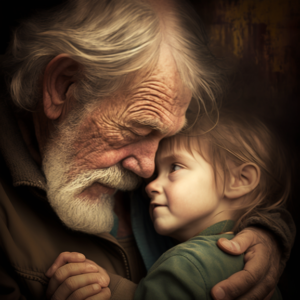 Efforts such as passing anti-discrimination laws and promoting diversity initiatives within organizations are crucial steps toward addressing these inequalities that permeate our social fabric.
Efforts such as passing anti-discrimination laws and promoting diversity initiatives within organizations are crucial steps toward addressing these inequalities that permeate our social fabric.
Transgender Rights
Transgender rights have increasingly gained recognition and awareness within the broader LGBTQ+ movement. This marginalized group of individuals, whose gender identity differs from the sex they were assigned at birth, often face unique challenges and discrimination compared to other members of the LGBTQ+ community.
In recent years, advocates have made strides in advancing transgender rights through legal battles and policy changes. States like California have passed legislation such as the Gender Recognition Act, which simplifies the process for updating one’s legal gender on identifying documents like birth certificates and driver’s licenses.
Additionally, public figures like Laverne Cox and Janet Mock continue to break down barriers by openly discussing their experiences as trans women of color in mainstream media platforms.
The Importance Of Intersectionality Within The LGBTQ Community
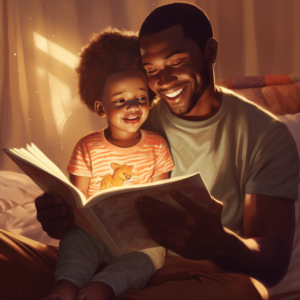 The LGBTQ+ community is diverse and intersectional, encompassing people of different race, socioeconomic status, ability, gender identity and sexual orientations.
The LGBTQ+ community is diverse and intersectional, encompassing people of different race, socioeconomic status, ability, gender identity and sexual orientations.
The Impact Of Race And Ethnicity
Intersectionality is a crucial component in understanding the experiences of LGBTQ+ individuals, particularly when considering race and ethnicity. Discrimination against minority groups often intersects with discrimination based on sexual orientation or gender identity, creating unique challenges for individuals who belong to both communities.
For instance, Black transgender women face staggering rates of violence and prejudice due to their intersecting identities – with fatal consequences. Research has shown that discrimination faced by members of racial and ethnic minorities exacerbates health disparities and limits access to healthcare services for LGBTQ+ individuals who hold a marginalized status within society.
Socioeconomic Status And LGBTQ+ Discrimination
Socioeconomic status plays a critical role in shaping the experiences of LGBTQ+ individuals, as socioeconomic disadvantage can exacerbate existing discrimination based on sexual orientation and gender identity.
 For instance, LGBTQ+ people who experience poverty or homelessness may face heightened levels of violence or abuse due to their minority status.
For instance, LGBTQ+ people who experience poverty or homelessness may face heightened levels of violence or abuse due to their minority status.
Moreover, transgender individuals often face severe economic barriers due to widespread employment discrimination that limits their ability to access jobs with higher incomes and benefits.
Economic inequality also affects the ability of LGBTQ+ youth from low-income backgrounds to attend schools where they are safe from bullying and harassment.
Disability Activism Within The Community
Disability activism within the LGBTQ+ community is crucial to ensuring equal rights for all members of the community. People with disabilities face unique challenges when it comes to accessing healthcare, finding employment, and securing housing.
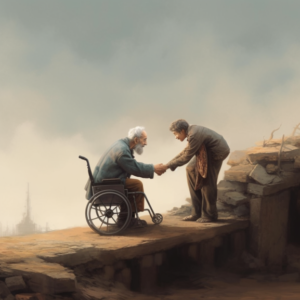 Fortunately, many disability activists have worked tirelessly to address these issues within the LGBTQ+ community. One key example is the National Gay and Lesbian Task Force’s Disability Network (now known as NCTE), which has been working since 2006 to advance transgender rights specifically among people with disabilities.
Fortunately, many disability activists have worked tirelessly to address these issues within the LGBTQ+ community. One key example is the National Gay and Lesbian Task Force’s Disability Network (now known as NCTE), which has been working since 2006 to advance transgender rights specifically among people with disabilities.
Additionally, organizations like SAGE (Services & Advocacy for GLBT+ Elders) have made significant strides in improving access to healthcare and social services for elderly members of both communities who may face additional obstacles related to aging or disability status.
The Fight For Equal Rights And Current Efforts
Legal advocacy and court cases have been instrumental in securing LGBTQ+ rights, with notable achievements including the legalization of same-sex marriage in 2015 and recent Supreme Court rulings protecting transgender individuals from employment discrimination.
About The Equality Act And Its Significance For LGBTQ+ Rights
The Equality Act is a groundbreaking bill that seeks to ensure legal protections for individuals who identify as LGBTQ+. If passed into law, it would provide comprehensive federal nondiscrimination protections based on sexual orientation and gender identity in the areas of employment, housing, credit, education, public accommodations, federally funded programs and activities, and jury service.
Currently, only twenty-two states have laws that prohibit discrimination based on both sexual orientation and gender identity. In contrast, there are still twenty-nine states that do not offer any such protections.
For instance, without the Equality Act’s protections in place at a national level, an employer could fire or refuse to hire someone simply because they are gay or transgender.
Despite some opposition to this important bill from anti-LGBTQ+ groups who claim it offers “special rights,” securing these basic human rights is necessary for those who experience common yet distinct forms of discrimination due to their sexual orientation or gender identity.
Legal Advocacy And Court Cases
 The fight for equal rights for the LGBTQ+ community has involved legal advocacy and court cases. Here are some key examples:
The fight for equal rights for the LGBTQ+ community has involved legal advocacy and court cases. Here are some key examples:
- Obergefell v. Hodges: In 2015, the US Supreme Court legalized same-sex marriage across the country, granting LGBTQ couples the right to marry in all 50 states.
- Bostock v. Clayton County: In 2020, the Supreme Court ruled that LGBTQ workers are protected from employment discrimination under federal law, a major win for LGBTQ+ employment rights.
- Masterpiece Cakeshop v. Colorado Civil Rights Commission: This case involved a baker who refused to make a wedding cake for a gay couple, citing religious beliefs. The Supreme Court ruled narrowly in favor of the baker, but did not set a broad precedent allowing businesses to discriminate against LGBTQ+ people.
- Gavin Grimm’s case: This case involves a transgender student who sued his school district over its policy requiring him to use separate restroom facilities from other students at his school. The U.S. District Court for the Eastern District of Virginia ruled in favor of Gavin. The U.S. Court of Appeals for the Fourth Circuit affirmed the ruling in favor of Gavin on August 26, 2020.
Legal advocacy and court cases have been crucial in securing rights and protections for the LGBTQ+ community, but there is still work to be done to ensure full equality and end discrimination based on sexual orientation and gender identity.
Community Organizing And Activism
Community organizing and activism has been a crucial part of the fight for equal rights for the LGBTQ+ community. Here are some ways that people have come together to make a difference:
– Organizing Pride events and marches to increase visibility and show solidarity
– Creating safe spaces for LGBTQ+ individuals through community centers, support groups, and online forums
– Lobbying politicians and lawmakers to pass pro-LGBTQ+ legislation
– Holding protests and rallies to call attention to discrimination and advocate for change
– Partnering with businesses and organizations to promote inclusivity and support LGBTQ+ causes
Through these grassroots efforts, the LGBTQ+ community has been able to make significant progress towards achieving equality. However, there is still much work to be done, and community organizing and activism will continue to play a vital role in securing LGBTQ+ rights for years to come.
Education And Awareness Initiatives
Education and awareness initiatives are vital tools in the fight for equal rights for the LGBTQ+ community. These initiatives encompass a wide range of activities that promote understanding, acceptance, and empathy towards the LGBTQ+ population. Some of these initiatives include:
- LGBTQ+ History Education: Educating society about the history of the LGBTQ+ community is essential in promoting acceptance and understanding. It helps people understand why certain rights are necessary to secure and build an equitable society.
- Anti-Bullying Programs: Many members of the LGBTQ+ community experience bullying and harassment, which can lead to mental health issues like depression, anxiety, or even suicide. Anti-bullying programs aim to raise awareness about this issue and provide support to those affected.
- Gender-Inclusive Language Training: Gender-inclusive language training involves using gender-neutral pronouns and avoiding binary terms such as “he” or “she.” This process helps ensure that everyone feels included regardless of their gender identity.
- Cultural Competency Training: Cultural competency training involves teaching individuals how to respect different cultures and become aware of their own biases when interacting with others from various backgrounds.

- Safe Space Initiatives: Safe space initiatives create safe spaces for individuals who may feel marginalized or unsafe due to their sexual orientation or gender identity, providing them with a place where they can be themselves without fear of discrimination or abuse.
- Pride Events: Pride events celebrate the diverse identities within the LGBTQ+ community while raising awareness about issues affecting this population. These events bring people together, fostering a sense of belonging among members of this often-marginalized group.
By placing education at the forefront of our efforts toward building a more inclusive society, we can create lasting change that promotes equal rights for all members of every community.
Supporting The LGBTQ+ Community
Supporting the LGBTQ+ community is essential in ensuring that we live in a society that values diversity and inclusion. From becoming an ally to donating to organizations focused on LGBTQ+ rights, there are many ways to show our support.
Allyship And Visibility
Allyship and visibility are crucial elements in the fight for equal rights for the LGBTQ+ community. Being an ally means standing with and supporting individuals who identify as LGBTQ+, even if you don’t belong to that community yourself.
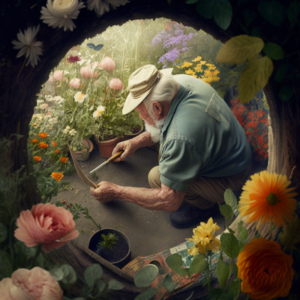 It’s important to understand your privilege and use it to advocate for those who may not have the same opportunities or protections.
It’s important to understand your privilege and use it to advocate for those who may not have the same opportunities or protections.
Visibility is similarly essential – one reason why representation matters so much is because it helps break down stereotypes and stigma associated with being queer. Showing support publicly through social media posts, attending pride parades or rallies, or sporting a rainbow pin on your bag all help create a safer environment where people feel more comfortable being themselves.
Supporting LGBTQ+ Youth
It’s essential that we create a safe and inclusive environment for LGBTQ+ youth, both at home and in schools. With higher rates of bullying, harassment, and suicide attempts within the community, it’s critical that we provide resources to support young people who may be struggling with their sexual orientation or gender identity.
One way to do this is by promoting allyship within our communities. Allies can be mentors, advocates, or just open ears for youth who may not have someone they feel comfortable talking to about their experiences.
 Additionally, organizations like The Trevor Project offer crisis intervention services specifically for LGBTQ+ youth in need of support.
Additionally, organizations like The Trevor Project offer crisis intervention services specifically for LGBTQ+ youth in need of support.
Mental Health Resources
Mental health is an important aspect of well-being for everyone, including members of the LGBTQ+ community who may face unique challenges. Here are some mental health resources that can be helpful:
- The Trevor Project: a national LGBTQ youth crisis intervention and suicide prevention organization offering phone, chat, and text support services.
- Therapy for Queer People: a directory of therapists who specialize in working with LGBTQ+ individuals.
- Pride Counseling: an online therapy platform specifically for members of the LGBTQ+ community.
- National Alliance on Mental Illness (NAMI): a non-profit organization providing education, advocacy, and support for individuals with mental illness.
- Trans Lifeline: a hotline staffed by transgender people providing peer support for those in crisis or just needing to talk.
- The LGBT National Help Center: offering personalized peer-support from trained volunteers as well as educational resources.
- MindOut: the first mental health service specifically designed for LGTBQ+ people in the UK.
Remember that seeking help is not a weakness but rather a strength, and there are many resources out there to support you on your journey towards mental wellness!
Celebrating Progress And Continuing The Fight
Despite the significant advancements in LGBTQ+ rights and representation, there is still much work to be done. Celebrating progress made so far is essential, but we should not let our guard down.
The battle for equal rights continues, and everyone needs to join forces to make a difference.
Notable Achievements In LGBTQ Rights And Representation
The LGBTQ+ community has made significant progress in recent years, achieving notable achievements and representation. Here are some of the highlights:
- Marriage Equality: In 2015, the Supreme Court affirmed the right to same-sex marriage throughout the United States, giving LGBTQ couples the legal right to marry.
- Transgender Rights: In 2020, the Supreme Court ruled that workplace discrimination against LGBTQ individuals is a violation of federal civil rights law. This landmark ruling protects transgender individuals from being fired or denied employment based on their gender identity.
- Visibility and Representation in Media: From Queer Eye to Pose, LGBTQ+ representation in media has increased dramatically in recent years. This increased visibility helps to break down stigma and promote acceptance for LGBTQ+ individuals.

- Adoption and Family Rights: Same-sex couples have gained legal recognition as family units and are now afforded many of the same rights as heterosexual couples when it comes to adoption and parenting.
- Increased Awareness and Education: With celebrities like Ellen DeGeneres and Lady Gaga coming out publicly as part of the LGBTQ+ community, awareness about different sexualities/gender identities grows every day creating new opportunities for education.
These achievements are significant steps towards greater equality for members of the LGBTQ+ community but there is still work to be done to ensure full protection against discrimination at all levels of society.
The Need For Continued Advocacy And Activism To Ensure Ongoing Progress
While there have been significant strides towards securing equal rights for the LGBTQ+ community, it is important to recognize that this fight is far from over. Discrimination and prejudice continue to persist in everyday life, causing harm and marginalization for many members of the community.
One crucial way in which individuals can support the movement for LGBTQ+ rights is through education and awareness initiatives. By educating oneself on issues related to sexual orientation and gender identity, one can become a better ally and advocate for those who may be experiencing discrimination or abuse.
However, activism doesn’t need to come in large-scale forms – small acts of kindness can make a world of difference too. Simple gestures like using someone’s preferred pronouns or correcting others’ jokes at the expense of marginalized communities can signal that you stand with those who may be facing oppression or injustices.
Conclusion And Future Outlook For LGBTQ+ Rights
In conclusion, the LGBTQ+ community has made significant strides towards achieving equal rights, but there is still a long road ahead. It’s important to celebrate progress and acknowledge notable achievements, like the legalization of same-sex marriage and increased representation in media.
Moving forward, the future of LGBTQ+ rights will require ongoing advocacy efforts at both individual and institutional levels. This includes supporting organizations that work on behalf of the community through donations or volunteering time.
We must also continue educating ourselves and others about issues facing marginalized members of this population – especially transgender people – as well as fighting against anti-trans politics with informed activism.
